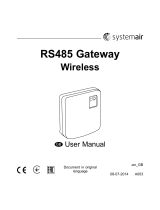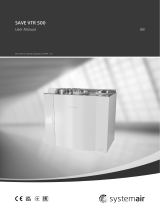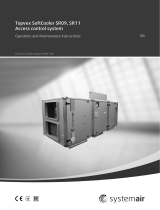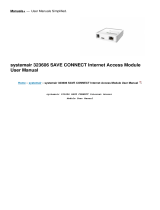
Defrost function | 5
2.4 Free cooling description
This function is used during the warm period to save energy by using cold outdoor air, e.g. during night time, to cool
down the building and thereby reducing the need for cooling during the day time.
Note:
The following is only valid if the free cooling function is activated in the program menu.
Free cooling is only activated when the following starting conditions are met.
Starting conditions:
• Less than 4 days have passed since the unit was last in running mode
• The outdoor temperature during the previous running period exceeded a set limit (+22°C)
• It is between 00:00 and 07:00:00 in the day (settable)
• The timer outputs for normal speed, Extended running normal and External stop are Off
• A time channel will be On sometime during the recently started 24 hours.
The unit checks the night temperature (indoor and outdoor temperature) during 3 minutes at the set starting hour when
the fans are started so that the sensors can perform a temperature measurement. If above conditions are met the free
cooling function is started, if not the unit goes back to OFF position.
If the outdoor sensor is not located in the outdoor air inlet duct and a room sensor has been selected, the unit will not
start free cooling as long as all the temperatures are not within the start and stop temperature intervals.
Stop conditions:
• Outdoor temp above the set max value (+18°C) or below the set min value (condensation risk, +10°C)
• The room temp/extract air temp is below the set stop value (+18°C)
• One of the timer outputs for normal speed, External stop or Extended running normal is On
• The time has past 07:00:00.
If any stop conditions is fulfilled after three minutes, the unit will stop again. Otherwise, operation will continue until a
stop condition is fulfilled.
When free cooling is active, the fans run at normal speed or the set value for pressure/flow control and the digital out-
put free cooling is active. The outputs block heating, cooling and heat exchanger. After free cooling has been activated,
the heating output is blocked for 60 minutes (configurable time). When using free cooling, an offset to normal fan con-
trol setpoint is adjustable.
3 Defrost function
By measuring the pressure difference over the exchangers extract/exhaust side the need for defrosting can be de-
tected. The differential pressure transmitter is auto calibrated by the system to obtain the correct pressure in relation to
the airflow. Manual calibration is possible, e. g. after cleaning of exchanger. Defrosting is possible with by-pass or stop
defrosting, adjustable in the display.
Defrosting is stopped when the desired, adjustable decrease in pressure over the heat exchanger is obtained. If the de-
crease of pressure does not happens during defrost cycle, the air handling unit is stopped and an alarm is shown in the
display.
4 Maintenance
4.1 Important
Danger
• Make sure that the mains power supply to the unit is disconnected before performing any maintenance
or electrical work!
• All electrical connections must be carried out by an authorized installer and in accordance with local rules
and regulations.
151628 | A002






























